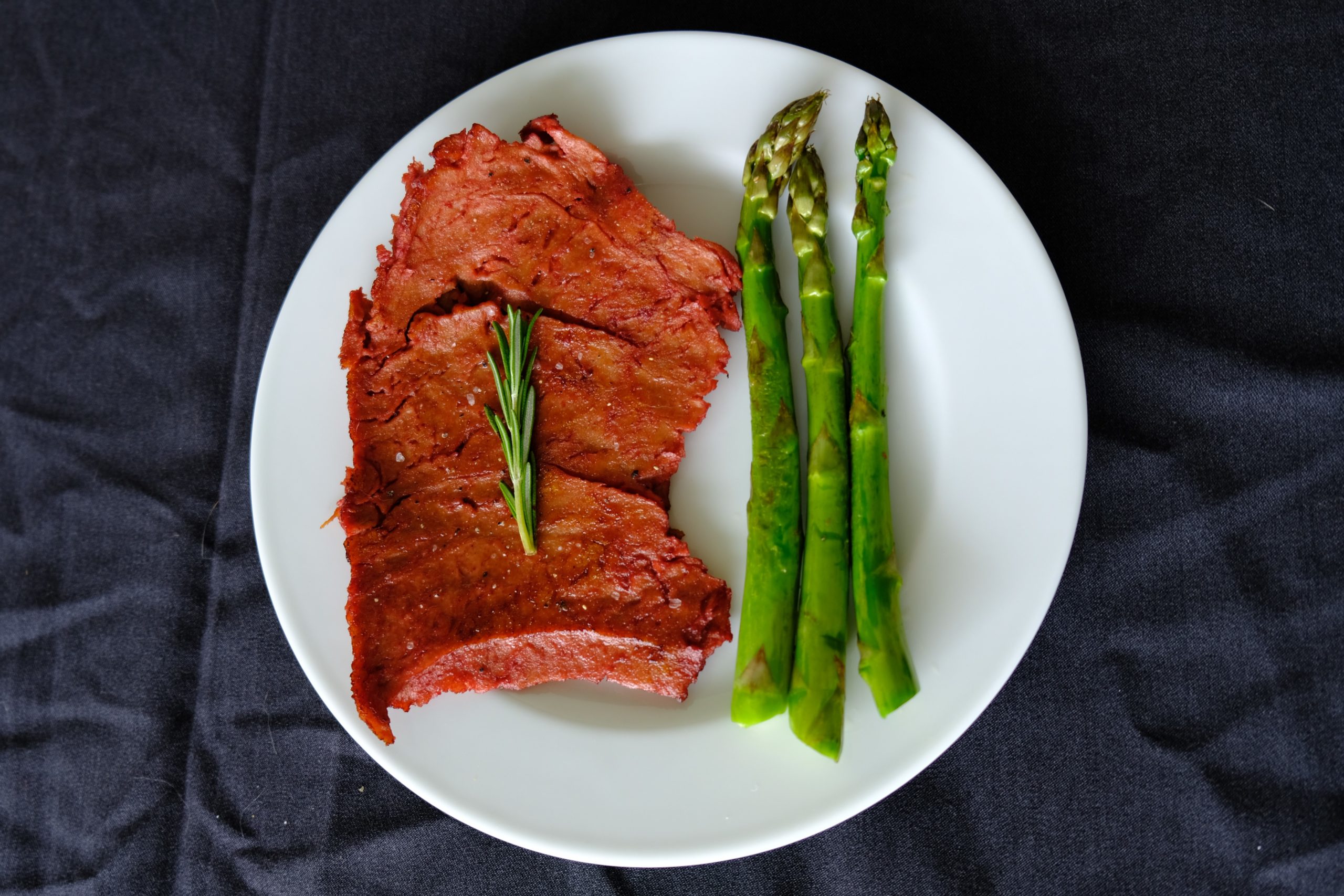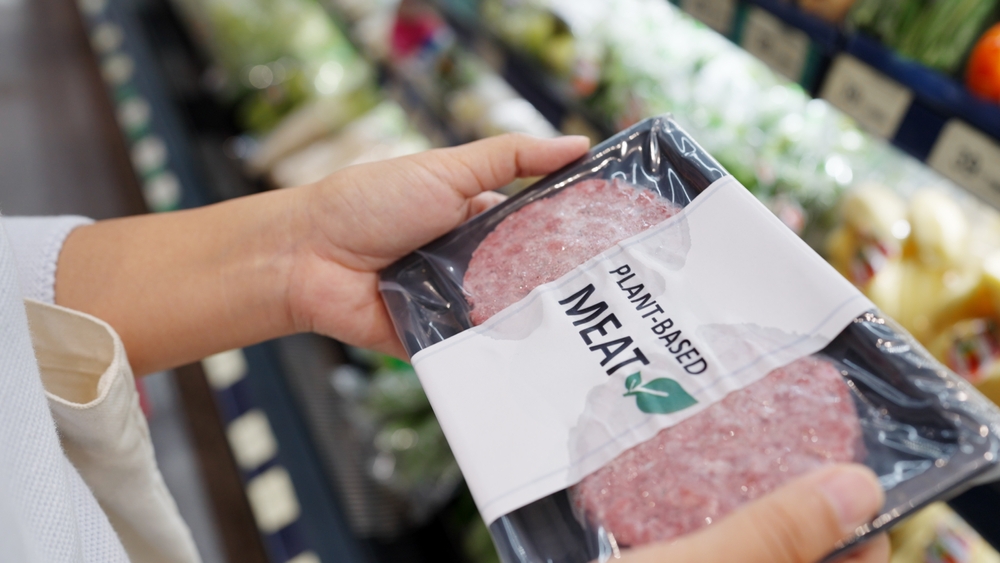Silvia Snel, a PhD candidate in Food Process Engineering, combined two different production methods in an effort to make new and larger-sized meat substitutes. She conducted her research at the Western Switzerland University College (HES-SO). She is to return to Wageningen for a short time for her defence at the start of November.
‘The meat substitutes that are currently available on the market are all varieties of the same product’, Snel says in a video interview from Switzerland. ‘This is because the method of production is the same for all of them. This method is excellent for the production of small-sized meat substitutes, such as diced chicken and minced meat, but is unsuited for larger portions, such as steaks and chicken breasts. That is a big disadvantage. In order to transition towards a more plant-based diet, we need a larger variety in meat substitutes and improved quality.’
Large chunks of “meat”
An alternative method, the shear-cell method, was developed in Wageningen some two decades ago. This method can mimic the fibrous texture of meat. ‘This technology allows for the production of larger chunks of “meat”, but only on a smaller scale. I have tried to combine the two production methods so that we can mass-produce new types of large-sized meat substitutes.’
To this end, Snell designed a prototype of a machine in Switzerland ‘with which we can still produce diced chicken, but also a chicken breast.’
Experimenting
The new production process also enables producers to experiment with different ingredients. ‘Meat substitutes are often made from soya because we know that the product meets our expectations. However, there are many different ingredients that may be suitable from a sustainability perspective. Moreover, different meat products have different textures. We aim to mimic that in the substitutes.’
The college where Snel conducted her study has a testing factory and room for the development of new machines. ‘A prototype based on the combined technology has recently been made here by a company that normally sells only machines based on the “old” technology. Such machines will soon become available for producers of meat substitutes. Then, they can start developing products for consumers.’

 ‘This technology enables us to mass produce new types of large meat substitutes.’ Photo Sylvia Snel
‘This technology enables us to mass produce new types of large meat substitutes.’ Photo Sylvia Snel 